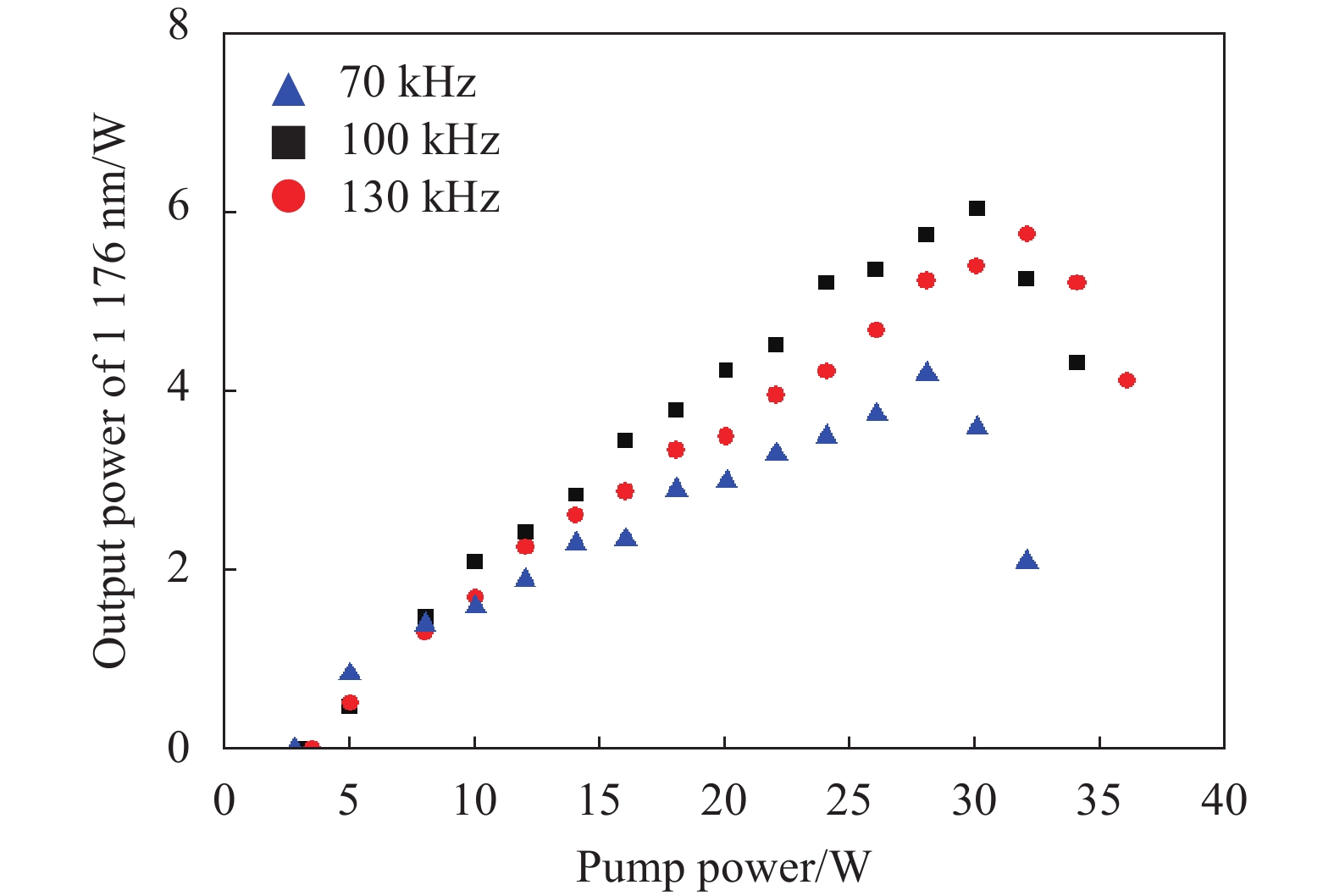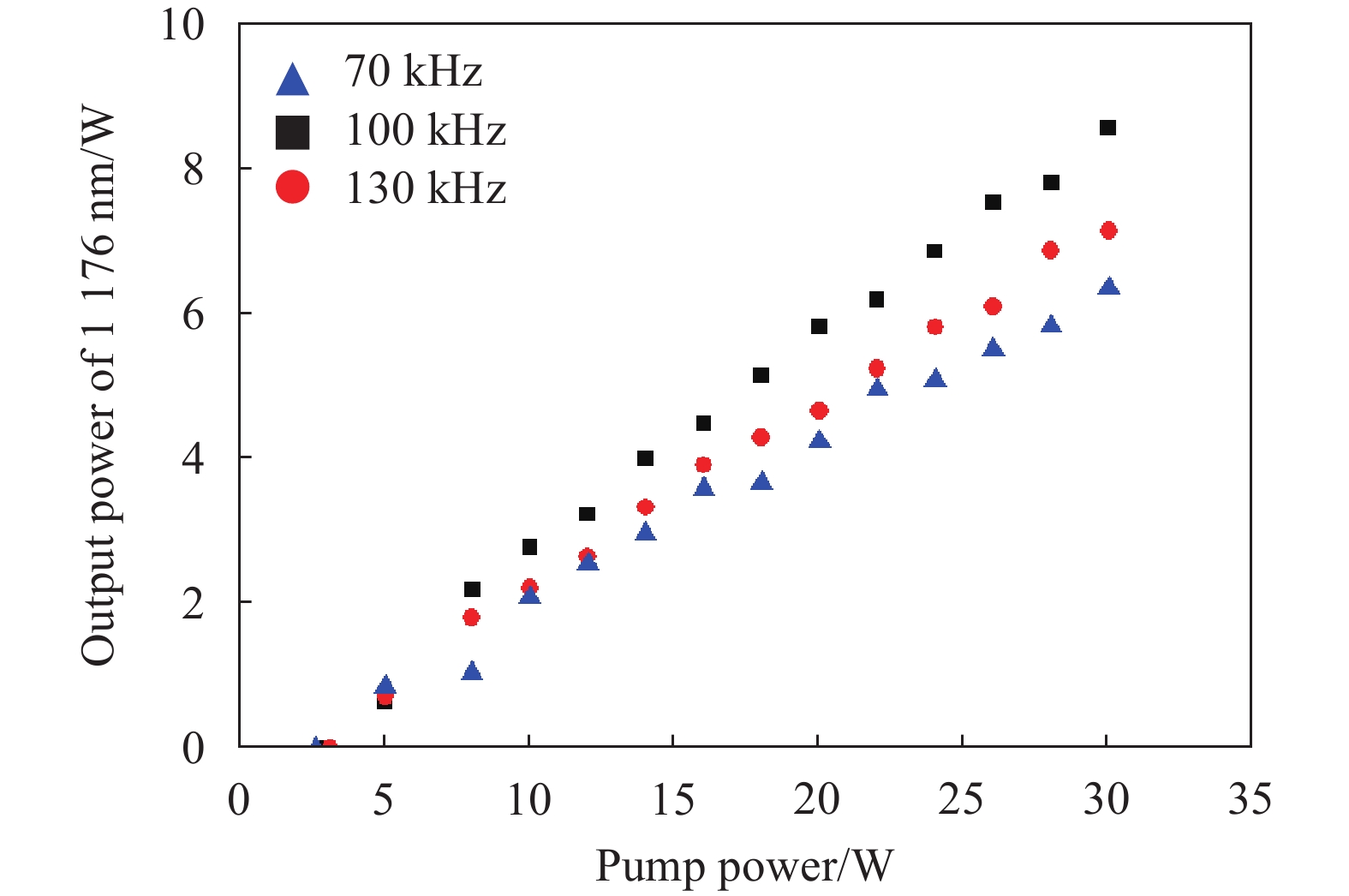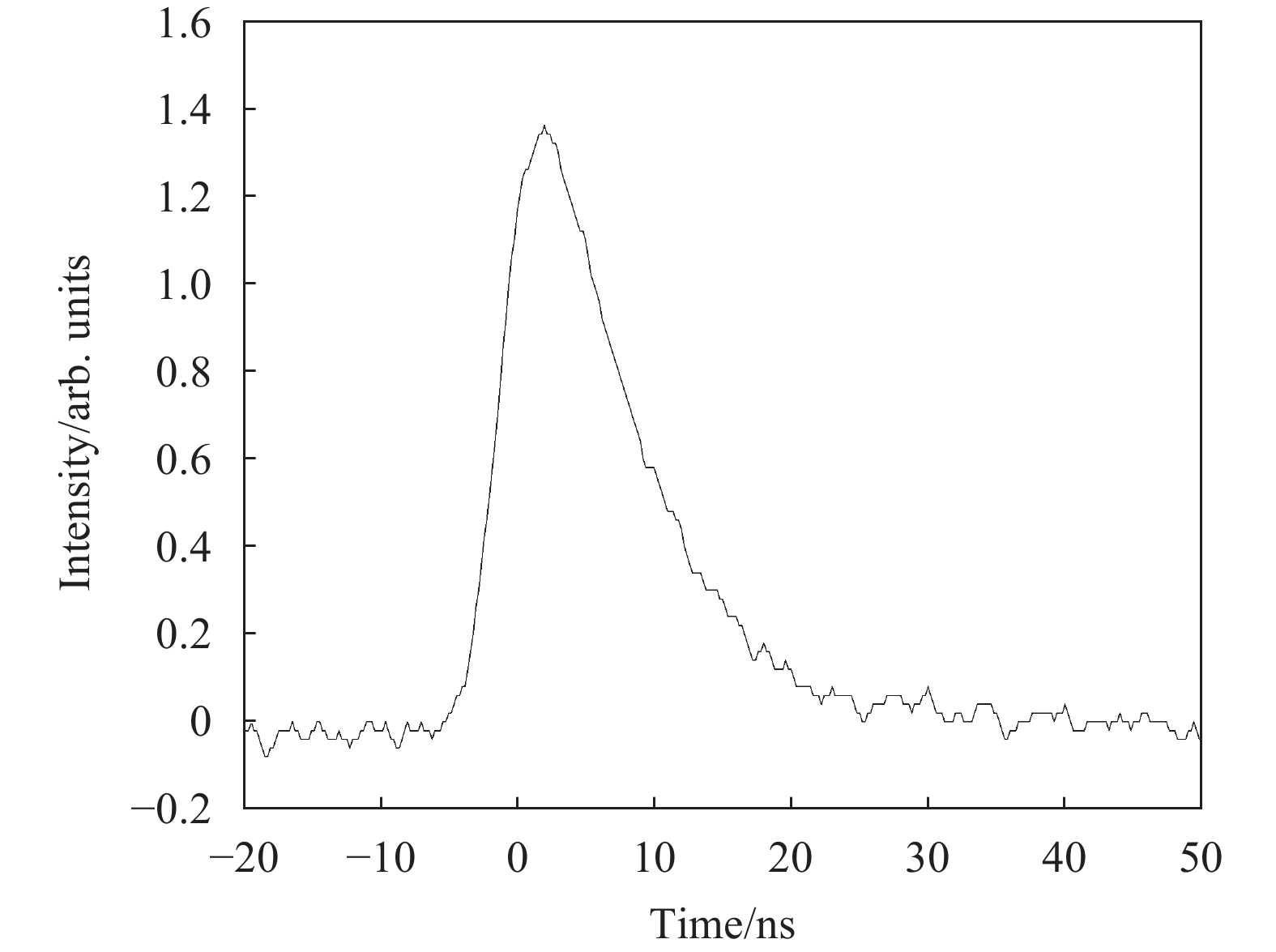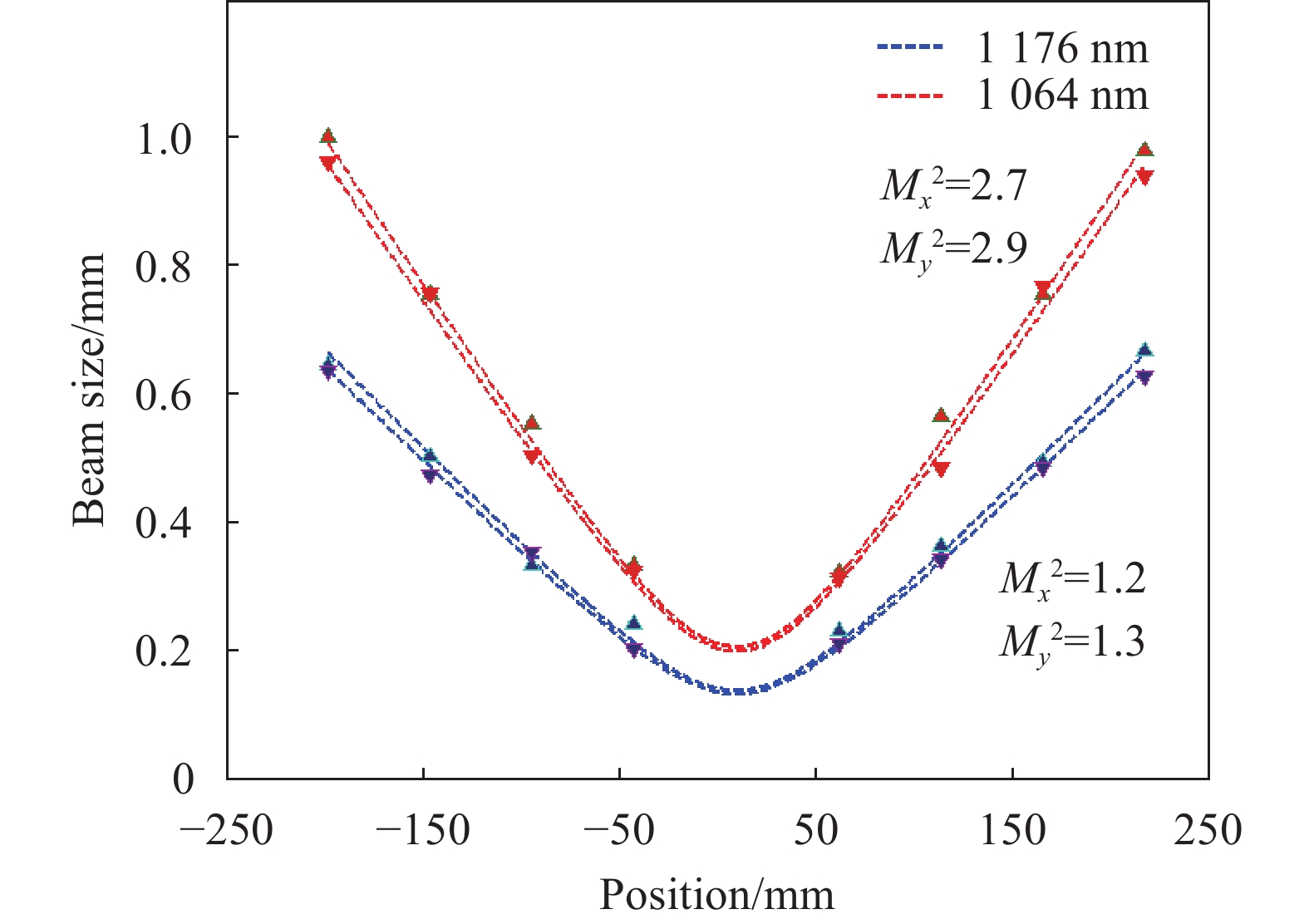-
基于受激拉曼散射这一非线性光学频率变换技术的拉曼激光器是实现光谱拓展的有效途径[1]。近年来,基于Nd:YVO4、Nd:GdVO4晶体的自拉曼激光器凭借结构紧凑、体积小、成本低的优势引起研究人员重视,并被广泛研究[2-7]。然而由于自拉曼激光器增益介质除了作为激光介质产生基频光外又作为非线性光学频率变换晶体实现频率转换,在受激拉曼散射这个非弹性散射过程中,在产生斯托克斯(Stokes)散射光的同时,泵浦光子与Stokes光子之间的能量差以声子的形式释放出来,转化为热量,进一步加重了晶体中的热负载,因此,自拉曼激光器中的热效应远比相同条件下基频光单独运转时严重。由于拉曼增益是温度的减函数[8],因而晶体温度上升会导致拉曼增益严重下降。Y. F. Chen曾指出相较于采用低掺杂浓度Nd:YVO4晶体,使用高掺杂浓度Nd:YVO4晶体作为自拉曼激光器增益介质时,由于热效应的加剧,激光器转换效率明显下降[2],合理地采用低掺杂浓度的自拉曼介质能够在一定程度上缓解热效应。对于目前报道的多数端泵自拉曼激光器,严重的热效应限制了泵浦功率上限,从而阻碍了输出功率的进一步提升[6, 9]。目前缓解热效应的方式有很多,如共振泵浦技术[10-12]和采用键合晶体[10]等,其中最为行之有效的方式是共振泵浦技术[4, 13-16],通过降低激光产生过程中由于量子亏损所产生的热,从根本上缓解了激光器的热效应。尤其是采用锁波长878.6 nm共振泵浦方式,相较于传统808 nm泵浦和914 nm热助推共振泵浦,其既可以较大程度上缓解热效应,又可以保证泵浦光的充分吸收,从而获得高的激光器光光效率[8, 14]。此外,锁波长半导体激光器(LD)输出波长随LD温度变化不敏感,保证了激光器运转的稳定性。为了追求更高效率、更高输出功率的全固态自拉曼激光器,在缓解热效应的同时尽可能提升泵浦功率上限是具有可行性的途径。调制泵浦技术即通过外接信号源对半导体激光器的工作频率及占空比进行调制,进而控制泵浦光作用于工作介质上的时间,相对于连续泵浦机制,在相同平均泵浦功率下,调制泵浦能够提供更高的瞬时泵浦功率,大幅提升反转粒子数密度,实现更高增益。2007年,P. Dekker等[9]采用斩波器对LD输出泵浦光进行外调制后泵浦Nd:GdVO4自拉曼黄光激光器,将连续泵浦机制下受热透镜限制的泵浦功率上限由16.3 W提升到25.7 W,586.5 nm黄光输出功率由678 mW提升到1.88 W,相应的光光效率由连续泵浦机制下的4.16%提高到调制泵浦机制下的7.32%。
文中将共振泵浦和调制泵浦技术相结合,在共振泵浦缓解热效应的基础上,利用调制泵浦技术提升泵浦功率上限,从而保证自拉曼激光器高效运转。当泵浦源的调制频率为10 kHz、占空比为40%、连续泵浦功率为75 W(平均功率为~30 W)时,在声光Q开关的重复频率为100 kHz下获得8.57 W的1176 nm斯托克斯光输出,光光转换效率28.6%。较相同泵浦功率的连续泵浦机制下,斯托克斯光平均输出功率提高了42%,光光效率提高了8.5%。实验结果表明,采用共振泵浦和调制共振泵浦相结合的方式可以有效缓解热效应,提高泵浦功率上限,从而提高自拉曼激光器的光光效率。此外,得益于调制泵浦机制下可提供瞬时的高泵浦功率,提高了反转粒子数密度,从而有效地压缩了输出斯托克斯光脉冲的宽度。在相同平均泵浦功率及重复频率下(70、100、130 kHz),斯托克斯脉冲宽度分别由连续泵浦机制下的18、20、21 ns减小到调制泵浦机制下的11、12、14 ns,相应的斯托克斯光峰值功率得到大幅度提升。
-
实验装置如图1所示,泵浦源为878.6 nm波长锁定光纤耦合输出半导体激光器,其最大连续输出功率75 W,线宽0.3 nm,如此窄的线宽可以很好地与晶体的吸收峰相匹配,弥补了共振泵浦吸收带宽窄的缺点,并且该泵浦源具有很好的温度稳定性,当热沉温度由10~40 ℃发生变换时,其发射的中心波长仅移动0.3 nm,线宽基本保持不变,这使得利用该半导体激光器作为泵浦源具有极高的温度稳定性。通过给驱动源控制信号可以对泵浦源的调制频率和占空比进行设定。传能光纤芯径为400 μm,数值孔径0.22。由传能光纤输出的泵浦光经过1∶1.5透镜组成像聚焦到Nd:YVO4晶体中。
激光器谐振腔为线型平凹腔结构,M1为平平镜,镀有对878.6 nm泵浦光高透、对1064 nm基频光及1176 nm斯托克斯光高反膜系;M2为曲率半径为500 mm的平凹镜,镀有1064 nm高反和1176 nm透过率10%的膜系。Nd:YVO4晶体的规格为3 mm×3 mm×30 mm,Nd3+掺杂浓度为0.2%,双面镀有1000 ~1200 nm的增透膜。声光Q开关的超声波频率为80 MHz,最大射频功率为20 W。激光器总腔长为80 mm。
-
首先对连续泵浦方式进行了实验,结果如图2所示。当激光器的重复频率为70 kHz,泵浦功率为27.8 W时最高获得了4.2 W的1176 nm斯托克斯光输出,继续增加泵浦功率出现功率下降;当重复频率增加到100 kHz时,泵浦功率为30.2 W,获得了6.04 W的1176 nm斯托克斯光输出,光光转换效率20.1%,继续增加泵浦功率后也出现了饱和现象;继续增加重复频率至130 kHz,泵浦功率32.5 W时获得了5.76 W的1176 nm斯托克斯光输出,相比于70 kHz和100 kHz,最高泵浦功率有所提高。激光器在70 kHz、100 kHz和130 kHz重复频率下工作时的阈值分别为2.81 W、3.22 W和3.19 W,脉冲宽度分别为18 ns、20 ns和21 ns。实验结果表明,对于连续泵浦方式由于激光器的热效应比较严重,容易过早出现热饱和现象,这种热饱和阻碍了激光器功率的进一步提升,从而不能获得高功率输出,光光转换效率也受到限制。

Figure 2. Relationship between output power and pump power of the 1176 nm under continuous-wave pumping
为了缓解自拉曼激光器的热效应,提高泵浦功率上限,从而实现输出功率的提升,将连续泵浦方式改为调制泵浦方式,调制频率选用经过实验验证的最优10 kHz。泵浦源的连续输出功率为75 W,占空比由10%~60%变化时,自拉曼激光器的输出功率如图3所示。当占空比为40%、对应的平均泵浦功率为30 W时,Q开关调制频率分别为70 kHz、100 kHz和130 kHz,分别获得了6.36 W、8.57 W和7.14 W的最高平均输出功率;当占空比继续增加,虽然对应的平均泵浦功率有所上升,但激光器的输出功率逐渐下降;当占空比增加到60%时,对应的平均泵浦功率为45 W,三种Q开关调制频下率分别获得了2.25 W、3.86 W和4.95 W的自拉曼激光输出。相比于占空比40%的情况出现了明显下降,这是由于占空比增加,晶体的热效应会进一步加剧,虽然总体的泵浦功率提高,但由于热效应的加剧,导致输出功率出现了明显的下降。

Figure 3. Influence of duty circle on average output power of 1176 nm Stokes under different pulse repetition frequencies
将泵浦源的占空比固定为40%,调制频率为10 kHz,调节泵浦源的输出功率,得到了图4所示的输出功率特性曲线。Q开关调制频率为70 kHz、100 kHz和130 kHz情况下最高分别获得了6.36 W、8.57 W和7.14 W的斯托克斯光输出,对应的光光效率分别为21.2%、28.6%和23.8%。值得指出的是,在LD所能提供的最大泵浦功率下,激光器的输出并未出现饱和迹象,表明斯托克斯光功率仍有上升空间,限于泵浦源的输出功率最高为75 W,笔者没有继续增加泵浦功率。

Figure 4. Output power of 1176 nm wave as function of incident pump power at the pump duty cycle of 40%
实验测量了输出斯托克斯光的脉冲宽度,在70 kHz、100 kHz和130 kHz重复频率下,最高平均输出功率时对应的脉冲宽度分别为11 ns、12 ns和14 ns。调制泵浦的脉冲宽度相比于连续泵浦情况明显被压缩,这是由于同等平均泵浦功率下调制泵浦方式的瞬时泵浦功率相比连续波泵浦方式下更高,从而提高了反转粒子数密度,使脉冲宽度得到有效的压缩。图5给出了重复频率为100 kHz时的脉冲波形图。
如图6所示,在1176 nm斯托克斯光最高平均输出功率时采用刀口法对其光束质量进行了测量,测量结果为Mx2=1.2,My2=1.3。将输出镜换为曲率半径为500 mm、1064 nm透过率10%的输出镜,获得1064 nm输出,测量1064 nm激光的Mx2=2.7,My2=2.9。实验结果表明,斯托克斯光的光束质量明显优于基频光的光束质量,这是由于受激拉曼散射具有光束清洁效应(Clean-up effect),能对光束质量起到一定的优化作用[17],即使在基频光光束质量较差的情况下仍然可以获得光束质量较好的拉曼激光输出。
-
文中采用共振泵浦和调制泵浦技术相结合的方案,有效缓解了自拉曼激光器中的热效应并提高了泵浦功率上限,实现了高效、高功率的自拉曼激光器。采用具有调制能力的878.6 nm锁波长LD作为泵浦源,在连续75 W(平均功率~30 W)泵浦光泵浦激励下,当泵浦源的调制频率为10 kHz、占空比为40%、Q开关重复频率为100 kHz时,获得了最高平均功率为8.57 W的1176 nm斯托克斯光,相应光光效率为28.6%。相较于相同条件的连续泵浦情况下,输出功率提高了42%,光光效率提高了8.5%。得益于调制泵浦机制下可以提供更高的瞬时泵浦功率,较之连续泵浦机制,输出的斯托克斯光脉冲宽度得到大幅压缩,有效提升了斯托克斯光的峰值功率。实验结果表明,锁波长调制共振泵浦方式可以有效地降低自拉曼激光器的热效应,提高光光转换效率,为实现大功率自拉曼激光器提供了一种行之有效的技术途径。
Efficient wavelength-locked 878.6 nm diode-modulated-pumped Nd: YVO4 self-Raman laser
doi: 10.3788/IRLA20200227
- Received Date: 2021-06-10
- Rev Recd Date: 2021-08-16
- Available Online: 2022-01-06
- Publish Date: 2021-12-31
-
Key words:
- self-Raman laser /
- Nd:YVO4 laser /
- diode-modulated pumped /
- in-band pumping
Abstract: An in-band pumped and diode-modulated-pumped Nd:YVO4 self-Raman laser was demonstrated. Aiming at the problem of low output power and optical conversion efficiency caused by thermal effect in all-solid self-Raman laser, the in-band pump and diode-modulated pump schemes were both adopted to mitigate the thermal effects and increased the upper limit of the pump power, so as to improved the output power and optical conversion efficiency of the Nd:YVO4 self-Raman laser greatly. With a diode-pump modulation frequency of 10 kHz and duty cycle of 40%, the maximum average power of 8.75 W Stokes wave output at 1176 nm was obtained under a diode pump power of 30 W at a pulse repetition frequency (PRF) of 100 kHz. The corresponding optical conversion efficiency was 28.6%. Compared with the experimental results under the continuous pumping mechanism with the same pump power, the average output power of Stokes wave was improved by 42%, with the optical conversion efficiency improved by 8.5%. The experimental results show that the combination of in-band pump and diode-modulated pump schemes can effectively mitigate the thermal effect and increase the upper limit of pump power, so as to improve the output power and optical conversion efficiency of the self-Raman laser.



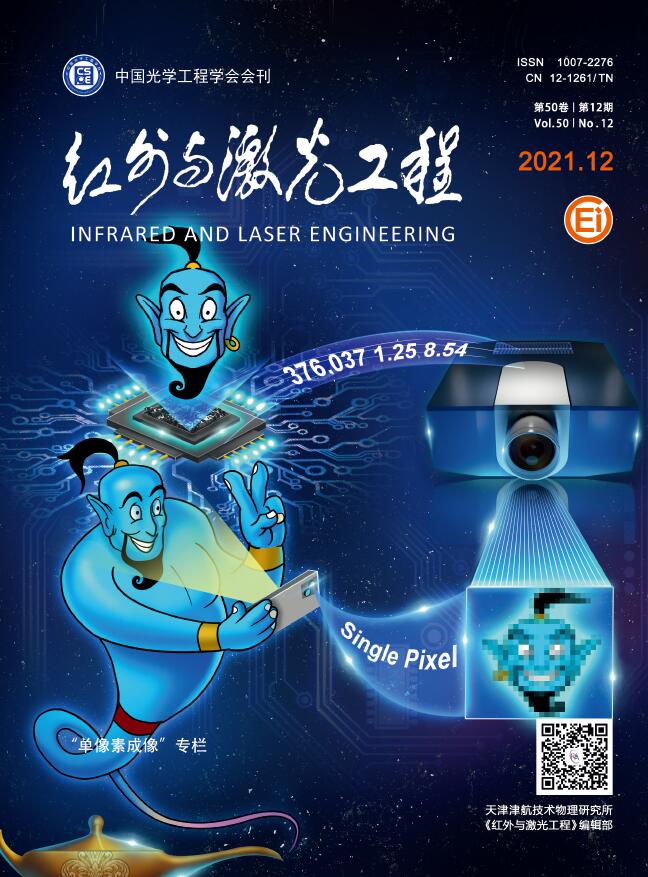







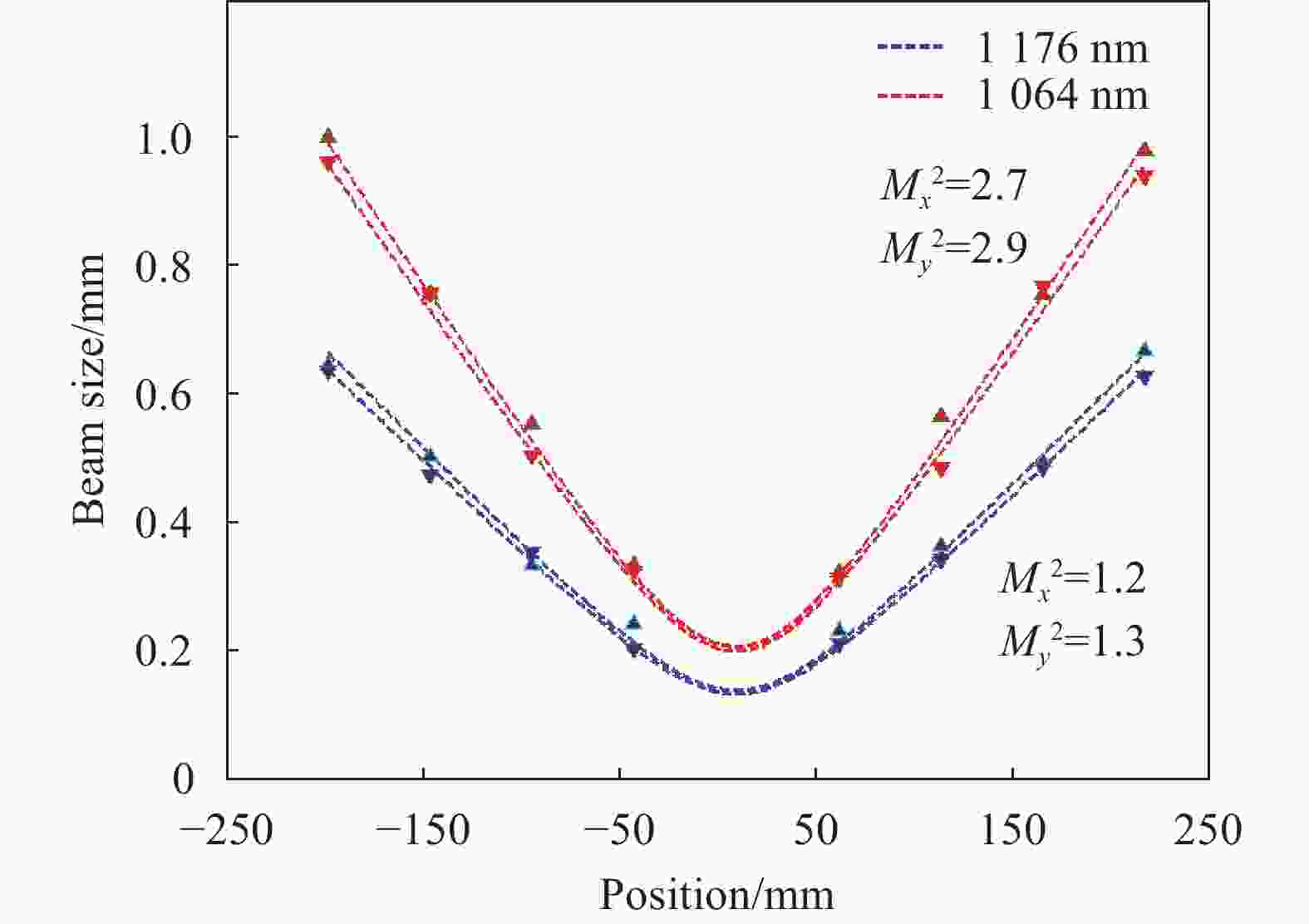

 DownLoad:
DownLoad:
